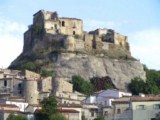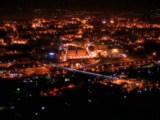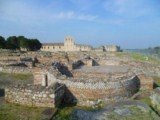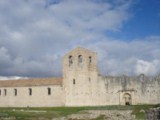|
POTENZA - BASILICATA - SOUTH ITALY The city is located on a ridge of the Apennines north of the Lucane Dolomites in the valley of Basento, crossed by the river of the same name and surrounded by a number of the highest mountains such as mountains Li Foj. The old medieval heart, the historic town district, is located in the upper part of the city, while modern and extended neighborhoods have sprung lower. Probably, the first location of the city was at an altitude of 1,095mt. above sea level, in the area now called Serra di Vaglio. In the following period, the settlement may have moved, for unknown reasons, on the hill where the historic town centre is currently located.
The city center is in Piazza Matteotti, on which overlooks Town Hall, crossed by the Via Pretoria, busy city street in the center that widens in the central Piazza Mario Pagano, known by the people of Potenza as the Piazza Prefettura, that hosts the nineteenth-century palace of the prefect, now the residence of the Prefect and the base of the provincial offices. In the same square is the famous Teatro Stabile, built in 1856 and opened in 1865 due to an interruption of work due to earthquakes, frequent in the area. In the most downstream of the hill on which the city stands, however, have come to form several residential neighborhoods, commercial and popular areas that have made the most important city in its role as the capital, greatly contributing to its development. Recently discovered in the area Gallitello, the Archaeological Site is the most important site ever discovered in the urban context of Potenza. Thanks to the excavations for the construction of the complex knot of Gallitello , it was possible to confirm the presence of a residential complex, located at the confluence of the two rivers Basento and Gallitello. At present investigations this settlement would seem to grow in at least six rectangular rooms of which are partly preserved outer walls, occupying an area of ??about 300 square meters. This would be an old farmhouse functional to the agricultural exploitation of the area. The examination of ceramic artefacts and other remains found does suggest a date between the late fourth and early decades of the third century BC , to be related with the settlement of Lucaniat a time earlier than the Romanization of the territory. The complex, which is one of the very few discoveries made to date in the underground city is still being excavated. |
||||||||









